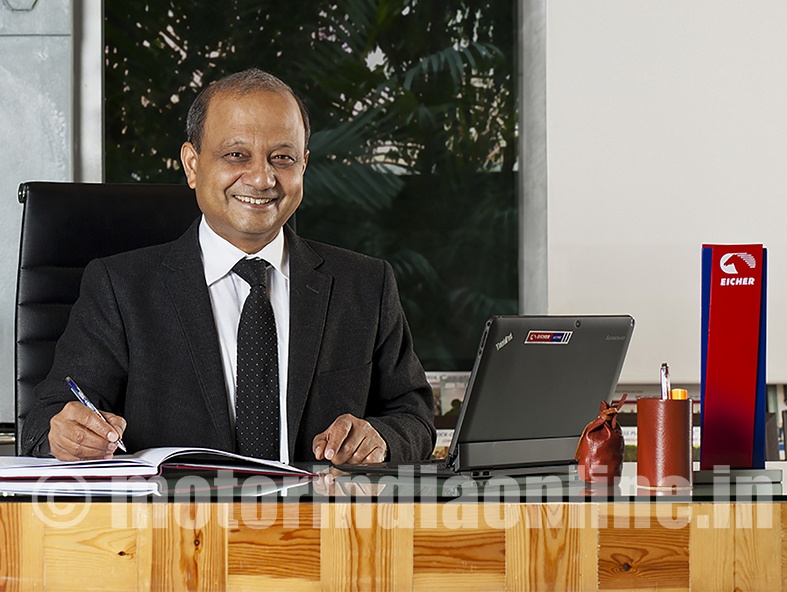Volvo Eicher Commercial Vehicles (VECV) announced its BS-VI readiness in style with the unveil of the country’s first BS-VI compliant CV range, its Pro 2000 series, in June. Mr. Vinod Aggarwal, MD & CEO, VECV, tells us why his company is bullish about its prospects post April 2020.

Excerpts:
Level of readiness
VECV has more than six years of experience in manufacture of Euro-VI compliant base engines and we are supplying the same to Volvo Group. We are an exclusive manufacturing hub for Volvo Group for all their medium-duty automotive engine requirements worldwide.
VECV has the access to the learnings of Volvo Group in managing Euro-VI technology and their aftermarket experiences with the customers on Euro-VI technology. We have incorporated all these learnings in the development process of BS-VI engines in India which gives us an edge in the market.
We became the first company in India to receive the CNG BS-VI emission compliant engine certification. We also unveiled the country’s first BS-VI compliant CV range in June this year with the introduction of the Pro 2000 series.
Our BS-VI range will provide an edge on three strong aspects that impact the total cost of ownership for our customers – best-in-class fuel efficiency, superior uptime, and lifetime support solutions.
Cost implications
BS-VI vehicles will definitely be costlier compared to the current BS-IV range. The cost increase will vary for different vehicles, with percentage increase for lower tonnage vehicles much higher than higher tonnage trucks. The exact increases will be announced closer to the launch date of the respective products. As far as absorption of this increase is concerned, I think the customers will have to pass on their cost increases. And if the economy is back on track next year, it should not be difficult.
The most important thing to make the transition smooth will be to ensure that our service network and dealer network are ready to handle the new technology. This will need a major effort to build up the competencies of the technicians as well as the sales teams. Dealers are also required to upgrade their infrastructure to service the new technology in terms of new tools and investments in training of manpower.
Challenges
The foremost requirement is the availability of BS-VI fuel across India well before the deadline of 31st March 2020.
The second big challenge is to exhaust BS-IV vehicles stock with channel partners as well as with the OEMs. We do not want to see the fire-sale scenario in March 2020 as was experienced during the migration to BS-IV.
The third most important challenge will be to convince the customers to absorb the steep price increase.
The other challenges with respect to competencies as well as infrastructure upgradation have been mentioned earlier.
Opportunities
Given the serious environmental concerns, new emission norms bring India at par with global emission standards, helping the country move towards a cleaner and safer environment. Migration to BS-VI technology should lead to modernisation of the trucking industry. It should facilitate more connectivity in the vehicles that will lead to productivity benefits for the customers.
If the productivity benefits are proven, it will create more opportunities to boost the replacement demand in the next few years after the BS-VI migration.
Outlook
The current situation is not good with a drop of close to 25 per cent across the auto industry in the first four months of the current financial year. The major reasons are negative sentiments in the market and slowdown in the economy. However, I think we can expect a revival in the second half based on the following positives:
- Onset of festive season.
- Renewed investments in infrastructure. The Prime Minister has reiterated in his Independence Day address the firm resolve to invest Rs. 100 lakh crores in infrastructure.
- Southward movement of interest rates. Hopefully the banks and NBFCs will pass on the benefit to the customers.
- Hopefully the liquidity situation with NBFCs should improve in the second half based on steps initiated by the government and RBI.
- I hope the monsoon deficit would be met in the coming days leading to positive sentiments in the rural economy.
- Continuous renewal and modernisation of supply chain by e-commerce companies that will generate more demand for modern trucks.
- Some pre-buying in Q3 and Q4 due to expected increase in prices of vehicles from 1st April 2020.
- And most importantly, the industry is expecting some revival package from the government in the form of reduction in GST rates, proper scrapping policy of old trucks, etc.